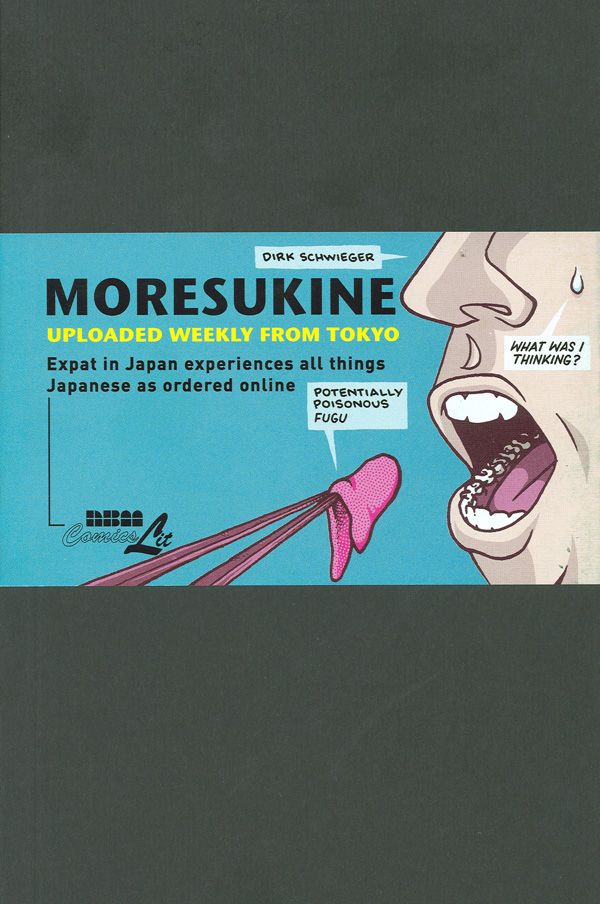I absolutely love the concept behind "Moresukine: Uploaded Weekly From Tokyo." Dirk Schwieger, having moved to Tokyo, started a blog and asked his readers to give him requests on all sorts of different things to do while he was there. Schwieger then turned each adventure into a four-page story (drawn in a Moleskine notebook) and uploaded the end result onto his blog. For a Western reading audience, it's a glimpse into all sorts of different situations they might otherwise never see.
I have to commend his readers in coming up with a lot of really clever adventures for Schwieger to jump into: attend a "para para" synchronized dance club, spend the night in a pod hotel, eat the fermented soybean dish known as natto, learn about local religions, or even something as simple as describing the two-room apartment that he and his two roommates live in. Schwieger's 24 assignments each take him into a different aspect of Japanese culture, and while some are more mundane than others (like riding a local roller coaster), it helps present a multi-faceted look at Tokyo life in general.
The big problem with "Moresukine," though, is that Schwieger always limits his stories to just four pages. The end result is a series of stories that often feel like they're barely scratching the surface of the experience, that we're getting little more than an introduction to each topic. There are exceptions to that issue, of course; I'm not entirely sure we'd have needed any more room to talk about drinking canned coffee, for example. But generally speaking, it feels like Schwieger has just begun his story when it comes crashing to a halt. Even two more pages could have made a big difference here, and on several occasions I felt nothing short of downright frustrated by the terseness of Schwieger's assignments.
Schwieger's art is adequate, if nothing really special. A lot of each page is actually taken up by the text of the piece, the art often serving more as a spot illustration to a brief essay. There are a couple inventive bits here and there; drawing the pod hotel chapter in panels as seen from the pod's window is clever, and he does an excellent job drawing the origami creations that he talks about in that chapter. But on the whole, it's nothing that's going to stick in your memory, which is a shame because a lot of the stories (like a trip to the Studio Ghibli Museum) could really benefit from some high-quality illustrations to go with the narrative.
The book closes out with Schwieger challenging several other web cartoonists to talk to a Japanese person in their town, but it's a bad way to end the book. Almost all of the stories come across as pointless (with the one exception being Marcel Guldemond's contribution) and more like a space-filler than anything else. It's a lackluster conclusion to what up until that point was an entertaining (if slightly frustrating) book. On the plus side, the book itself is beautifully designed like a Moleskine notebook (the title of "Moresukine" being the name of the brand in Japan), complete with a sewn-in bookmark and rounded corners. It's a pretty package for an interesting book, but I can't help but wish that just as much care was applied to the interior's contents as well. Good, but not great as it could have been.

